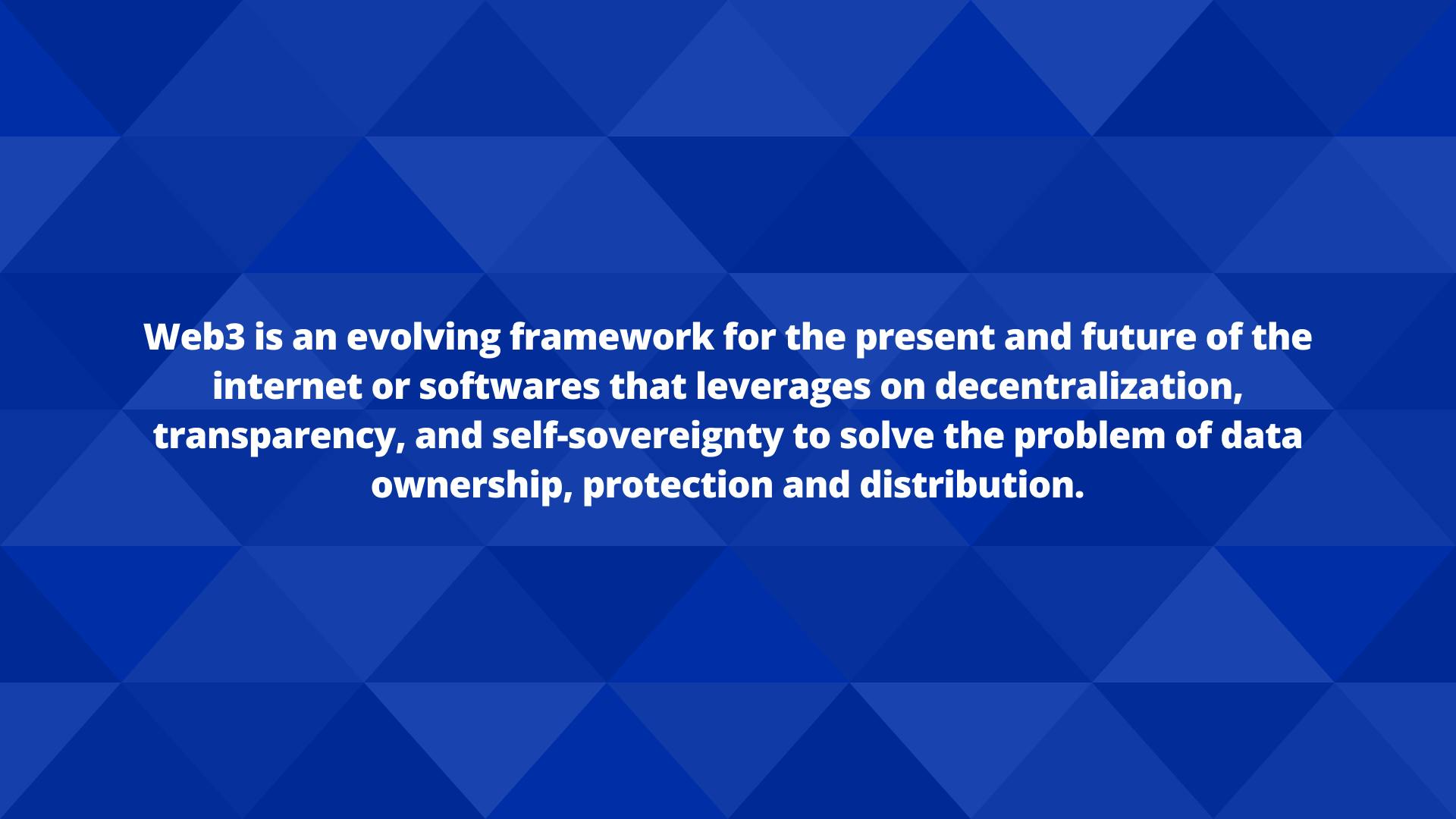
Photo by Shubham Dhage on Unsplash
Web2 vs Web3: Understanding Technology’s New Trajectory
Here's why you should be paying attention to the new internet.
At a time in the history of humanity, things change exponentially. Since the turn of the millennium and the last decade, technology has advanced to levels unforeseen whilst disrupting what used to be the “norms of society”. Blockchain technology in particular sits boldly at the center of this revolution. The blockchain is up against the age-old problem of collaborative decision-making. Change as we all know is inevitable and the current state of the internet is subject to this. The centralization of user data is how the internet and applications of today in Web2 function and thrive. An internet dominated by companies that provide services in exchange for your personal data. This internet is largely “Mobile-First” and Social Networks based.
Traditional Web2 companies like Google, Amazon, Facebook, Twitter, etc, collect user data in exchange for the services they offer. Remember this: In Web2, You have no control over your privacy, data distribution or how it is stored. Web2 in use as of today has a Centralized Approach.
What this means in simple terms is that “intermediaries” or companies control a huge chunk of user data. For instance, Financial Authorities currently existing in Web2 can shut down access to bank accounts or limit access to funds. Government and big tech oligarchs could wake up and shut down platforms and internet. This is exactly what provokes the conversation of “building a world or internet that nobody holds a say over who makes it or not”. Decentralization is the core difference between Web2 and Web3. To an extent, Blockchain enhances the current internet(Web2) we have today to one powered by everyone, for everyone(Web3).
Here Comes Web3
Blockchain technology is reshaping practically every business by making the digital world more inclusive, eliminating intermediaries, and restoring people’s sovereignty over their data. Web3 and Blockchain is the future and has come to stay but the topic requires a proper understanding and approach which i try to elaborate as much as possible.
Web3 servers will not crash down since the network will continue to function even if a significant number of users are attacked due to its decentralized nature. Also, anyone can participate in the network; there are no “gatekeepers.”
Blockchain technology has developed as a new framework for developing decentralized systems that do not require the intervention of a central authority. Tokenization, self-enforcement via smart contracts, NFTS/Play-to-earn Games, decentralization of server-less infrastructure, Decentralized Autonomous Organizations(DAOs), and DEFIs are proving to be new shifts in technology unseen before.
For a newbie, slang techie words like Web3, Metaverses, Tokenization, Solidity, WAGMI, Layer2, Yield Farming etc. can be a lot to take in. Truth be told, quite an amount of advanced or “senior developers” have ephemeral knowledge of these terms and blockchain frameworks. Web3 enables ownership and this resonates with a lot of users of technology. Having an internet built on this ideology is a shift in gears (in the right direction) obviously. Both creators, artists and the community can obtain and keep ownership in Web3 quickly and independently. This is quite evident in the NFT space already.
Shared ownership and "Communities with common goals" are trends associated with all aspects of Web3, including how we build firms and the governance structures with improvements on incentivization. Tokenization and certain protocols are now shaping the ways companies begin, build and expand. Of course the advantages of building such with Web3 is that everyone can participate, more liquidity, transparency since the tokens/transaction history are on the blockchain, etc. To understand this fully, think in terms of Distributed Systems that are permission-less and fully inclusive with user data and privacy being secured. Blockchain technology enables any asset or service to be represented and stored on a blockchain ranging from financial asset to real estate with anonymity as a key factor.
For instance, when building on the Decentralized Apps(DAPPS) or Software on the Blockchain, once the Smart Contract is deployed, the parties have no say and therefore cannot change the terms of the contract/transaction. These activities are accessible, distributed and stored via Wallets i.e all the users need to partake, access or benefit from these DAPPS and their services is just a wallet that is completely anonymous unless the user decides to attach his/her identity to it. It’s an Open Ticket to all; technical or non-technical, located anywhere etc.

It’s imperative that Technology is built right. History has proven time and time again that when placed in the right hands, technology benefits all, solves salient problems and births even better possibilities. To Build Right, one has to “learn and build competence”. Few start-ups like Nestcoin are doing amazing work to demystify the Web3 and onboard a lot of enthusiasts placing a majority of Africans at valuable positions to contribute to the next internet.
Hope you had a good read and please stay tuned for more contents on blockchain and Web3.
#wagmi
